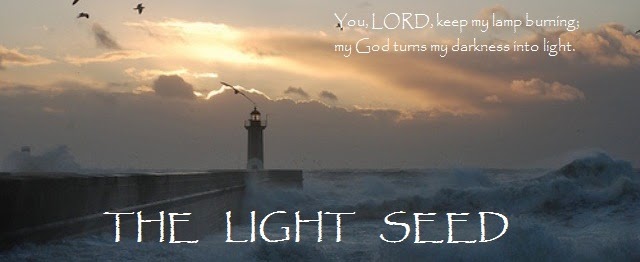It is the third time in a week where pro-Palestinian activists have clashed with the city's Jewish residents. On Sunday, locals reported chats of "Gas the Jews" and "Kill the Jews", as rioters attacked businesses in the Sarcelles district, known as "little Jerusalem".
Manuel Valls, France's prime minister said: “What happened in Sarcelles is intolerable. An attack on a synagogue and on a kosher shop is simply anti-Semitism. Nothing in France can justify this violence.”
Religious
leaders gathered for an interfaith service on Monday to call for calm,
and Haim Korsia, the chief rabbi of France, and Hassen Chalghoumi, the
imam of Drancy shook hands on the steps of the synagogue.
Francois Pupponi, the mayor of Sarcelles, told BFMTV that the violent attacks were carried out by a "horde of savages."
"When you head for the synagogue, when you burn a corner shop because it is Jewish-owned, you are committing an anti-Semitic act," interior minister Bernard Cazeneuve told reporters at a press conference at the local synagogue.
Eighteen people were arrested for attacks on shops, including a kosher supermarket, a Jewish-owned chemist and a funeral home. Rioters, who carried batons and threw petrol bombs according to eyewitnesses, were yards from the synagogue when they were driven back by riot police who used tear gas.
“They were shouting: ‘Death to Jews,’ and ‘Slit Jews’ throats’,” David, a Jewish sound engineer told The Times. “It took us back to 1938.”
“We called our town 'Little Jerusalem' because we felt at home here,” Laetitia, a longtime Sarcelles resident, told France 24. “We were safe, there were never any problems. And I just wasn't expecting anything like this. We are very shocked, really very shocked."
Roger Cuikerman, head of the Representative Council of Jewish Institutions in France told Radio France International: "They are not screaming, 'Death to the Israelis' on the streets of Paris. They are screaming, "Death to the Jews." The community was not just scared, but "anguished."
The government had banned a demonstration planned in Paris for Saturday, but posters were seen around the area which said “Come equipped with hammers, fire extinguishers and batons" and promised a "raid on the Jewish district”.
France has around half a million Jews, the biggest population in Europe, and around five million Muslims.
The Society for the Protection of the Jewish Community's figures suggest that anti-Jewish violence is seven times higher than in the 1990s, and 40% of racist violence is against Jews, despite them making up just 1% of the population.
In March 2012, a shooting spree by Mohammed Merah in the south of France left three French soldiers, three Jewish schoolchildren and a rabbi dead. The gunman claimed a connection to al Qaeda.
More than a thousand Jews have made aliyah (the term used when Jews immigrate to Israel) in the past 10 days, according to the Israeli government.
"I came because of anti-Semitism,” said teary-eyed Veronique Rivka Buzaglo, one of 430 immigrants who arrived from France the day before. "You see it in the eyes of people. I see it in everything," she told HuffPost.
Buzaglo says nothing would have stopped her from becoming an Israeli citizen this week - not even the rocket sirens frequently blaring in the south of the country, where she plans to live.
Francois Pupponi, the mayor of Sarcelles, told BFMTV that the violent attacks were carried out by a "horde of savages."
"When you head for the synagogue, when you burn a corner shop because it is Jewish-owned, you are committing an anti-Semitic act," interior minister Bernard Cazeneuve told reporters at a press conference at the local synagogue.
Eighteen people were arrested for attacks on shops, including a kosher supermarket, a Jewish-owned chemist and a funeral home. Rioters, who carried batons and threw petrol bombs according to eyewitnesses, were yards from the synagogue when they were driven back by riot police who used tear gas.
“They were shouting: ‘Death to Jews,’ and ‘Slit Jews’ throats’,” David, a Jewish sound engineer told The Times. “It took us back to 1938.”
“We called our town 'Little Jerusalem' because we felt at home here,” Laetitia, a longtime Sarcelles resident, told France 24. “We were safe, there were never any problems. And I just wasn't expecting anything like this. We are very shocked, really very shocked."
Roger Cuikerman, head of the Representative Council of Jewish Institutions in France told Radio France International: "They are not screaming, 'Death to the Israelis' on the streets of Paris. They are screaming, "Death to the Jews." The community was not just scared, but "anguished."
The government had banned a demonstration planned in Paris for Saturday, but posters were seen around the area which said “Come equipped with hammers, fire extinguishers and batons" and promised a "raid on the Jewish district”.
France has around half a million Jews, the biggest population in Europe, and around five million Muslims.
The Society for the Protection of the Jewish Community's figures suggest that anti-Jewish violence is seven times higher than in the 1990s, and 40% of racist violence is against Jews, despite them making up just 1% of the population.
In March 2012, a shooting spree by Mohammed Merah in the south of France left three French soldiers, three Jewish schoolchildren and a rabbi dead. The gunman claimed a connection to al Qaeda.
More than a thousand Jews have made aliyah (the term used when Jews immigrate to Israel) in the past 10 days, according to the Israeli government.
"I came because of anti-Semitism,” said teary-eyed Veronique Rivka Buzaglo, one of 430 immigrants who arrived from France the day before. "You see it in the eyes of people. I see it in everything," she told HuffPost.
Buzaglo says nothing would have stopped her from becoming an Israeli citizen this week - not even the rocket sirens frequently blaring in the south of the country, where she plans to live.


